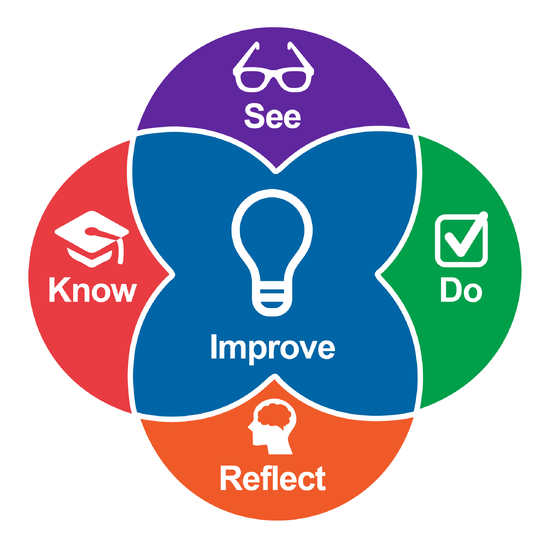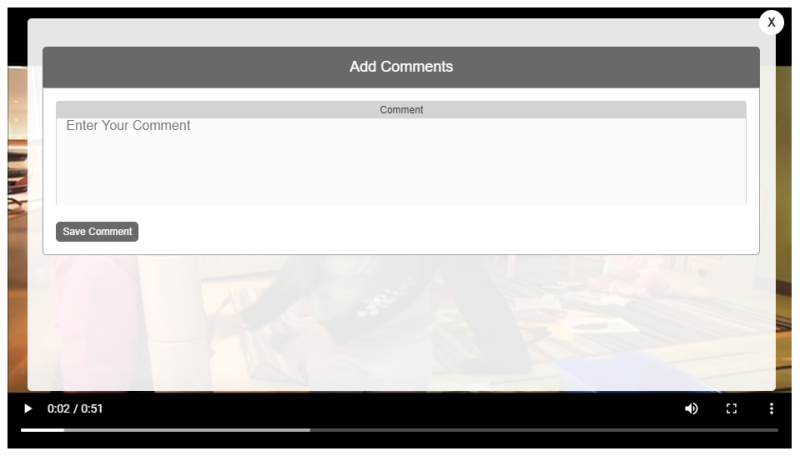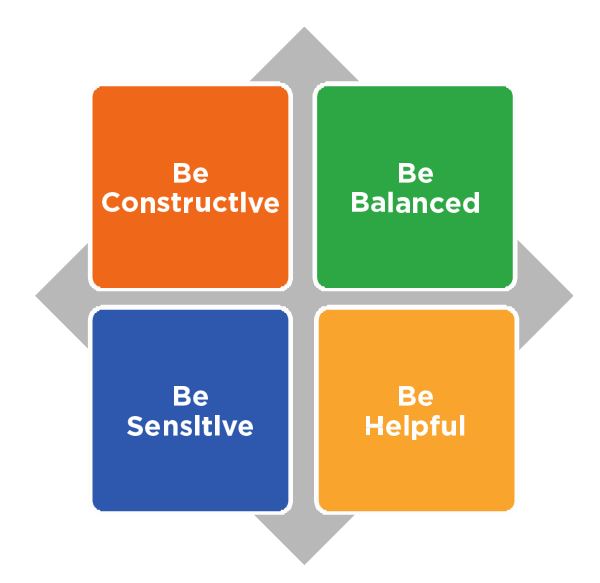Course Frameworks
Intentional Teaching Framework
EarlyEdU’s higher education courses use the Intentional Teaching Framework (Hamre, Downer, Jamil, & Pianta, 2012; Joseph & Brennan, 2013), which guides participants to:

Know—Learn about child development and effective teaching practices.
See—Identify teaching practices and children’s responses in participants’ own videos and those of other participants, using specific behavioral language.
Do—Set goals, plan, and use strategies. (Do can also involve applying knowledge during in-class activities.)
Reflect—Observe and analyze their own practices, including in their own videos and their peers’ videos.
Improve—Plan for and implement positive, quantifiable change to teaching practices.
REFERENCES
Hamre, B. K., Downer, J. T., Jamil, F. M., & Pianta, R. C. (2012). Enhancing teachers’ intentional use of effective interactions with children. In R. C. Pianta (Ed.). Handbook of early childhood education (pp. 507–532). New York: The Guilford Press.
Joseph, G. E., & Brennan, C. (2013). Framing quality: Annotated video-based portfolios of classroom practice by preservice Teachers. Early Childhood Education Journal, 41, 423–430.
Head Start Early Learning Outcomes Framework

This graphic spotlights the national Head Start Early Learning Outcomes Framework and its domains. This is one of the organizing frameworks of EarlyEdU courses.
This Head Start framework describes the skills, behaviors, and knowledge that educators should foster in children from birth to age 5, including children who are dual language learners or who have disabilities. In Head Start programs, the framework guides curriculum selection, implementation, and assessment. It is useful when planning and assessing teaching and learning experiences and children’s progress toward school readiness goals.
All five domains in the Head Start Early Learning Outcomes Framework are impacted by the quality of early relationships between educators, parents, and other caregivers and young children.
REFERENCE
U.S. Department of Health and Human Services, Administration for Children and Families, Office of Head Start. (2015). Head Start early learning outcomes framework: Ages birth to five. [Interactive Framework]
Framework for Effective Practice
This framework represents four integral elements of quality teaching and learning: engaging every day interactions with children (the foundation); choosing and implementing a strong curriculum (the first pillar); using regular assessment of children’s skills (the second pillar), and individualized teaching (the roof). These elements, when connected with one another, form a single structure that fosters children’s learning and development.

Expand each section of the house to recap:
The Foundation: Engaging Interactions and Environments
Effective, engaging interactions and environments are the foundation for all learning in early childhood classrooms. High-quality preschool classrooms include a well-organized and managed classroom, social and emotional support, and instructional interactions and materials that stimulate children’s thinking and skills.
The First Pillar: Research-Based Curricula and Teaching Practices
A high-quality, research-based curriculum provides learning goals and activities in key areas of children’s development that support school readiness goals. A curriculum provides guidance on what to teach (content) and how to teach (learning experiences and teaching strategies). The content is drawn from current child development science, the interests and ideas of the children, and the values of the community.
The Second Pillar: Ongoing Child Assessment
Ongoing assessment is integral to curriculum and instruction. Our objective is to help children achieve school readiness and their individual learning goals. We need to keep track of how the children are doing. Assessment information helps us monitor progress—both for individual children and for the program as a whole. Assessment information needs to be valid, reliable, and useful, so the results can inform curriculum and instruction.
The Roof: Highly Individualized Teaching and Learning
Young children vary widely in their skills, knowledge, backgrounds, and abilities. Teaching has to effectively reach all children, regardless of their abilities and disabilities. Effective instruction for all children requires specialized teaching and learning opportunities to access, participate, and thrive in the preschool classroom. Effective teachers are sensitive and skilled in interactions; they use ongoing formative assessment of each child’s skills to plan instruction; and they choose and use curricula and activities that engage all children, regardless of their strengths or needs.
Coaching Companion

You will use the video-sharing platform Coaching Companion™ in EarlyEdU courses. You may use it to upload short videos you create or to view videos of young children and educators or parents. Two handouts that will be helpful for using Coaching Companion and for creating video are:

CORP Groups

- Be balanced: If you point out areas for improvement, you should also point out areas of strength.
- Be helpful: Make specific and objective observations.
- Be sensitive: Remain open to multiple perspectives.
- Be constructive: Provide feedback that is encouraging or useful.
During this course, you are encouraged to share from your current and past teaching practices and will be seeing and participating in activities to improve your practices. We will reflect on these experiences. To make sure everyone is comfortable doing that, here are some guidelines or ground rules for class interactions.
- Use respectful language when discussing educators and children in videos. Many of the course videos feature real educators and early learning programs around the country. Let’s show respect for these children and educators by using respectful language. In this same vein, let’s agree to show respect for each other even if we don’t agree with another person’s actions or approach to handling an issue.
- Keep confidentiality. For confidentiality reasons, do not share the names of educators or children or discuss their interactions outside of course activities and assignments. Some of you may know each other or have friends in common. Use the classroom space as a safe zone to explore and question our current practices and learn new ones.
- Show sensitivity to any emotions that arise. This course will include reflection on your philosophies and experiences. It is important to recognize that you and others may have strong emotions when some questions or scenarios arise. Give yourself permission to take the time to personally process any emotions that arise. Share as you are comfortable.
